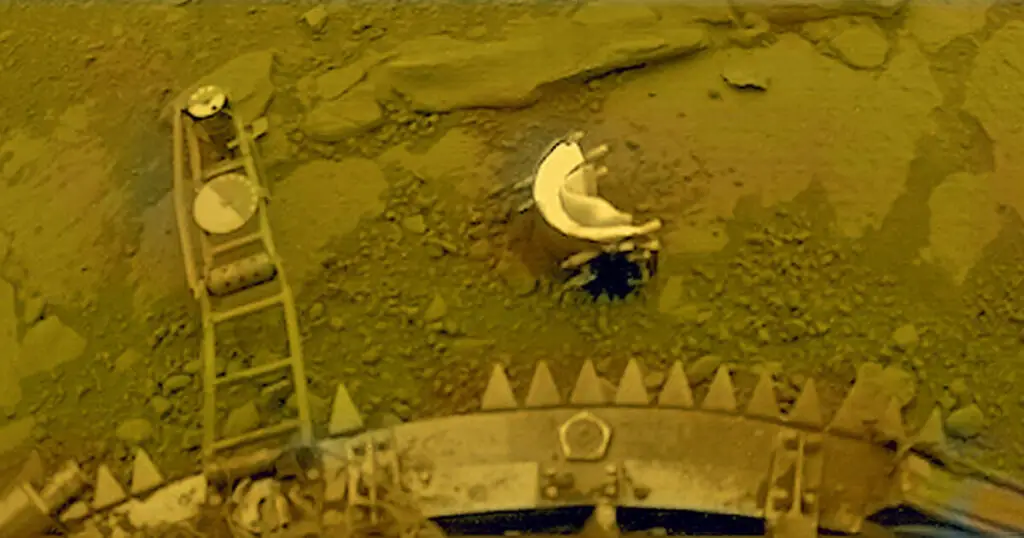The Soviet Union was deeply involved in space exploration throughout the 20th century, launching many groundbreaking missions to study our solar system and beyond.

One of their most remarkable missions was the landing of several probes on Venus, an alien planet with a hostile environment. In this article, we will explore what the Soviets discovered on this distant world and the significance of their findings.
Table of Contents
I. The Venera Program: Soviet Exploration of Venus
Background and Overview The Venera program was a series of robotic spacecraft missions launched by the Soviet Union between 1961 and 1984, with the primary goal of exploring Venus. These missions aimed to gather data about the planet’s atmosphere, surface, and geological features.

Major Accomplishments The Venera program achieved several firsts in space exploration, including the first human-made object to enter the atmosphere of another planet (Venera 4), the first successful soft landing on another planet (Venera 7), and the first images from the surface of another planet (Venera 9).
II. The Harsh Environment of Venus
Atmospheric Conditions Venus has an incredibly thick atmosphere composed mainly of carbon dioxide, with a small percentage of nitrogen and trace amounts of other gases. The atmospheric pressure at the surface is 92 times that of Earth, and the temperature reaches a scorching 465°C (869°F).

Geological Features Venus’s surface is rocky and volcanic, with vast plains, highlands, and large shield volcanoes. The planet’s geological activity is driven by a process known as “resurfacing,” which occurs approximately every 500 million years.
III. The Soviet : A Glimpse of the Alien World
Venera 9 and 10: First Images from Venus In 1975, Venera 9 and 10 successfully landed on Venus and transmitted the first-ever images from the surface of another planet. The images revealed a barren, rocky landscape with no signs of life.

Venera 13 and 14: Color Panoramas and Soil Analysis In 1982, Venera 13 and 14 provided even more detailed data, including color panoramas of the surface and soil samples. The images showed a yellowish-orange landscape, with flat rocks and a fine-grained regolith. Soil analysis revealed the presence of basaltic rock, suggesting volcanic activity.
IV. The Significance of Soviet Venus Exploration
Contributions to Planetary Science The Venera missions provided invaluable data about Venus’s atmosphere, geology, and surface conditions, significantly advancing our understanding of the planet. These findings helped scientists develop theories about the planet’s history, climate, and potential for life.
Technological Innovations The Soviet landers had to endure extreme temperatures and pressures, requiring innovative engineering solutions. The technologies developed for these missions have since been applied to other spacecraft and planetary exploration missions.
V. Conclusion
The Soviet Union’s exploration of Venus through the Venera program was a remarkable achievement in space exploration history. The images and data collected by the landers offered a glimpse into the harsh environment of an alien world, expanding our knowledge of the solar system and inspiring future generations of space explorers. As we continue to push the boundaries of space exploration, the legacy of the Soviet Venus missions will live on as a testament to human ingenuity and curiosity.

